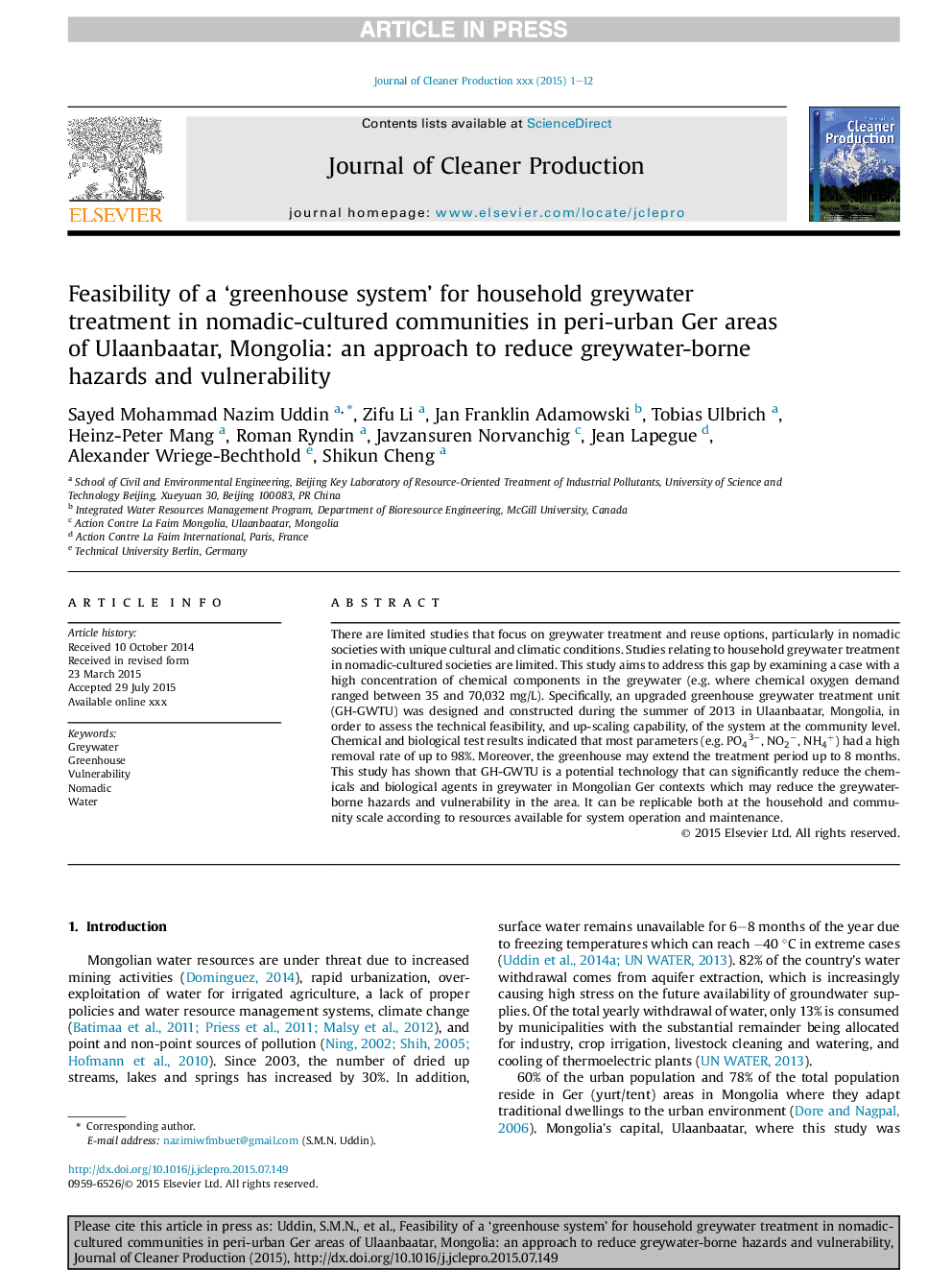| Article ID | Journal | Published Year | Pages | File Type |
|---|---|---|---|---|
| 8102800 | Journal of Cleaner Production | 2016 | 12 Pages |
Abstract
There are limited studies that focus on greywater treatment and reuse options, particularly in nomadic societies with unique cultural and climatic conditions. Studies relating to household greywater treatment in nomadic-cultured societies are limited. This study aims to address this gap by examining a case with a high concentration of chemical components in the greywater (e.g. where chemical oxygen demand ranged between 35 and 70,032Â mg/L). Specifically, an upgraded greenhouse greywater treatment unit (GH-GWTU) was designed and constructed during the summer of 2013 in Ulaanbaatar, Mongolia, in order to assess the technical feasibility, and up-scaling capability, of the system at the community level. Chemical and biological test results indicated that most parameters (e.g. PO43â, NO2â, NH4+) had a high removal rate of up to 98%. Moreover, the greenhouse may extend the treatment period up to 8 months. This study has shown that GH-GWTU is a potential technology that can significantly reduce the chemicals and biological agents in greywater in Mongolian Ger contexts which may reduce the greywater-borne hazards and vulnerability in the area. It can be replicable both at the household and community scale according to resources available for system operation and maintenance.
Related Topics
Physical Sciences and Engineering
Energy
Renewable Energy, Sustainability and the Environment
Authors
Sayed Mohammad Nazim Uddin, Zifu Li, Jan Franklin Adamowski, Tobias Ulbrich, Heinz-Peter Mang, Roman Ryndin, Javzansuren Norvanchig, Jean Lapegue, Alexander Wriege-Bechthold, Shikun Cheng,
